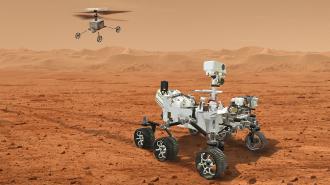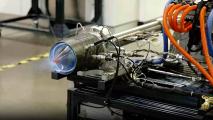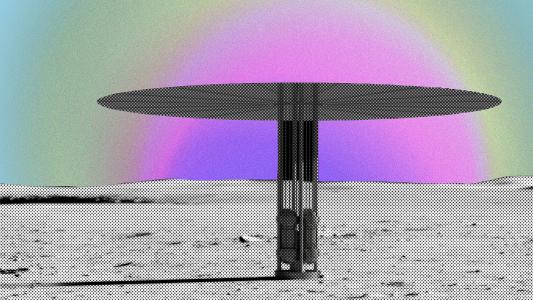NASA is so impressed with the performance of the Ingenuity helicopter on Mars that it has decided to update an upcoming sample return mission to include two new Mars helicopters — and these ones will have even more capabilities than their predecessor.
The background: When NASA’s Perseverance rover landed on Mars in February 2021, it wasn’t alone — a four-pound helicopter named Ingenuity had hitched a ride to the Red Planet attached to Percy’s belly.
NASA plans to study Perseverance’s samples for signs of ancient Martian life.
Two months later, Ingenuity made history by becoming the first craft to fly on another planet. Since then, the tiny experimental chopper has greatly outperformed expectations, completing 29 flights and remaining operational a full year longer than NASA had anticipated.
Perseverance has been a major success, too. It’s already collected a dozen samples of Mars’ surface and atmosphere, and based on a recent analysis, NASA expects the rover to survive into the 2030s — far longer than the two years originally expected.
Mars Sample Return: NASA hopes to bring the samples collected by Perseverance to Earth so it can study them for signs of ancient Martian life, and as of March 2022, its retrieval plan included sending two landers to Mars.
One lander would contain the ESA’s Sample Fetch Rover, which was supposed to retrieve the samples stashed by Percy on Mars and load them into the Mars Ascent Vehicle, a rocket ferried to the Red Planet in the other lander.
Now that NASA has completed the conceptual design phase of the Mars Sample Return (MSR) mission — and seen how well Ingenuity and Perseverance are performing — it thinks there’s a better way to get the Martian samples home to Earth.
The Mars helicopters will have wheels that will allow them to roll right up to stashed samples.
MSR 2.0: Instead of sending two landers to Mars, NASA is only going to send one. It will contain the Mars Ascent Vehicle, a robotic arm capable of loading samples into the rocket, and two new Mars helicopters similar to Ingenuity.
Perseverance will now be tasked with bringing the samples to the lander itself — eliminating the need for the Sample Fetch Rover — but if it needs help, each helicopter will have wheels that will allow it to roll right up to a stashed sample and a small arm it can use to grab the container.
Looking ahead: The preliminary design phase of the MSR mission is expected to kick off in October. During that year-long phase, NASA and its partners will wrap up development of the mission’s tech and create prototypes of its major components.
If all goes according to plan, the lander containing the new Mars helicopters should start its journey to the Red Planet in Summer 2028, with the samples — and all the exciting breakthroughs they may contain — expected to arrive on Earth in 2033.
We’d love to hear from you! If you have a comment about this article or if you have a tip for a future Freethink story, please email us at [email protected].


